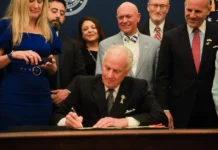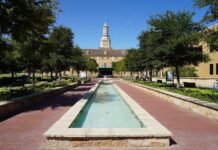The Jewish Historical Society of Greater Hartford has brought a traveling exhibit about the movement to free the Soviet Jews in the 1960s to the Mandell JCC’s Chase Family Gallery.
The exhibit, “Power of Protest: The Movement to Free Soviet Jews,” was created by the Philadelphia-based National Museum of American Jewish History. It details the protest movement regarding the rights of Jewish people living in Russia at that time.
Estelle Kafer, the executive director of the Jewish Historical Society of Greater Hartford, felt the exhibit was a timely fit, considering the current discourse in America on immigration and protest.
“Because of what was happening in the world at this time with civil rights, they recognized the fact that these Soviet Jews were being persecuted,” Kafer said. “They weren’t allowed to freedom of speech or religion. They closed synagogues. They could only live in certain areas. American Jews started realizing this.”
The exhibit features a series of panels explaining the history of this movement through text, photos, and video. It goes through the ways protest led to a successful outcome.
“There were all these protests,” Kafer said. “It was a grassroots efforts, meaning a lot was going on with small organizations. It was all over. They got everyone to protest and write letters. They sent people over there to assess the situation. It was a huge effort and it worked. They were able to make a difference.”
On July 18, at the Emanuel Synagogue in West Hartford, a discussion will take place about how the Jewish people of the Greater Hartford area reacted and responded to the movement. Kafer said stories will be told about the immigrants that came to the area in the 1970s through 1990s. The program begins at 7:30 p.m. and tickets are sold at the door for $5.
Kafer said Soviet Jews are very involved in the community and that several of them were at the exhibit’s opening.
“The Jewish Hartford community was very responsive to the Soviet Jews that came,” Kafer said. “There was a large call to action to help them in many ways through social services and helping them settle. We can hear about the Russians that came and their stories and how difficult it was.”
Through that, and the exhibit, Kafer said there’s a lot to learn and believes the history can be applied to our current world.
“We want to talk about the immigrants that came then and the ones that come now,” Kafer said. “This is an important story because of what’s happening today. It’s a wonderful learning opportunity of a very important period that especially resonates today.”
The exhibit, which was made possible in part by CT Humanities, will remain on display at the Mandell JCC through Aug. 29.
The exhibit can be viewed anytime the Mandell JCC is open. Kafer said if any groups want a guided tour of the exhibit, they should contact the Jewish Historical Society of Greater Hartford.


























